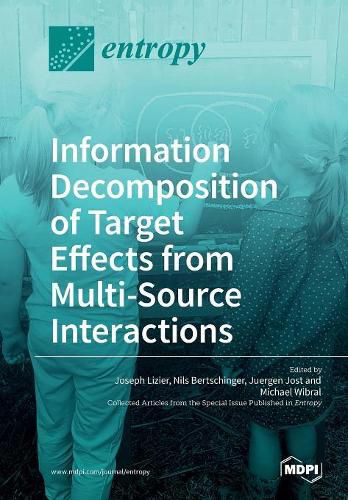Readings Newsletter
Become a Readings Member to make your shopping experience even easier.
Sign in or sign up for free!
You’re not far away from qualifying for FREE standard shipping within Australia
You’ve qualified for FREE standard shipping within Australia
The cart is loading…






This title is printed to order. This book may have been self-published. If so, we cannot guarantee the quality of the content. In the main most books will have gone through the editing process however some may not. We therefore suggest that you be aware of this before ordering this book. If in doubt check either the author or publisher’s details as we are unable to accept any returns unless they are faulty. Please contact us if you have any questions.
Using Shannon information theory to analyse the contributions from two source variables to a target, for example, we can measure the information held by one source about the target, the information held by the other source about the target, and the information held by those sources together about the target. Intuitively, however, there is strong desire to measure further notions of how this directed information interaction may be decomposed, e.g., how much information the two source variables hold redundantly about the target, how much each source variable holds uniquely, and how much information can only be discerned by synergistically examining the two sources together.
The absence of measures for such decompositions into redundant, unique and synergistic information is arguably the most fundamental missing piece in classical information theory. Triggered by the formulation of the Partial Information Decomposition framework by Williams and Beer in 2010, the past few years have witnessed a concentration of work by the community in proposing, contrasting, and investigating new measures to capture these notions of information decomposition.
This Special Issue seeks to bring together these efforts, to capture a snapshot of the current research, as well as to provide impetus for and focused scrutiny on newer work, present progress to the wider community and attract further research. Our contributions present: several new approaches for measures of such decompotions; commentary on properties, interpretations and limitations of such approaches; and applications to empirical data (in particular to neural data).
$9.00 standard shipping within Australia
FREE standard shipping within Australia for orders over $100.00
Express & International shipping calculated at checkout
This title is printed to order. This book may have been self-published. If so, we cannot guarantee the quality of the content. In the main most books will have gone through the editing process however some may not. We therefore suggest that you be aware of this before ordering this book. If in doubt check either the author or publisher’s details as we are unable to accept any returns unless they are faulty. Please contact us if you have any questions.
Using Shannon information theory to analyse the contributions from two source variables to a target, for example, we can measure the information held by one source about the target, the information held by the other source about the target, and the information held by those sources together about the target. Intuitively, however, there is strong desire to measure further notions of how this directed information interaction may be decomposed, e.g., how much information the two source variables hold redundantly about the target, how much each source variable holds uniquely, and how much information can only be discerned by synergistically examining the two sources together.
The absence of measures for such decompositions into redundant, unique and synergistic information is arguably the most fundamental missing piece in classical information theory. Triggered by the formulation of the Partial Information Decomposition framework by Williams and Beer in 2010, the past few years have witnessed a concentration of work by the community in proposing, contrasting, and investigating new measures to capture these notions of information decomposition.
This Special Issue seeks to bring together these efforts, to capture a snapshot of the current research, as well as to provide impetus for and focused scrutiny on newer work, present progress to the wider community and attract further research. Our contributions present: several new approaches for measures of such decompotions; commentary on properties, interpretations and limitations of such approaches; and applications to empirical data (in particular to neural data).